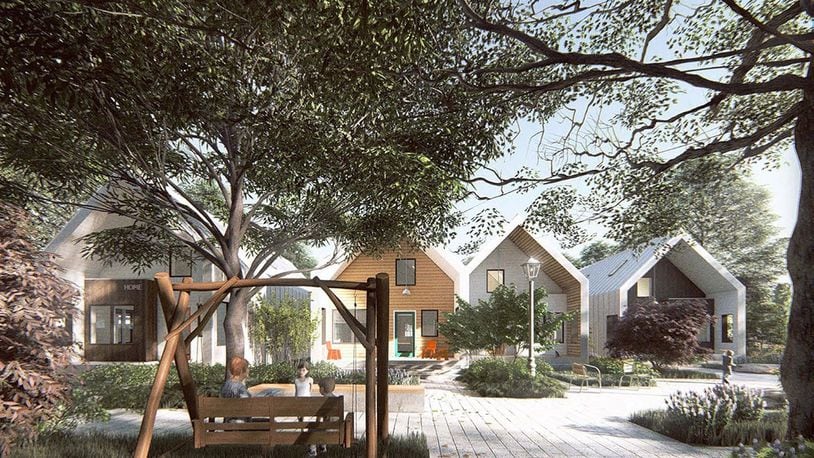STAY CONNECTED: Greene County News on Facebook
The small homes, which will be built around a small courtyard, are for sale now with price ranges between $190,000 to $240,000, according to Monica Hasek, project manager and director of AC’s wellness center.
“The initial cost of the home will be more expensive on a per-square-foot basis than average, reflecting the quality of materials and sustainable design. This will be offset to a large extent by lower energy and maintenance costs,” said Kevin McGruder, the project advisor and associate professor in history. “The homes will be smaller than the current average home, although more in-line with the size of cottages that were built in the late 1800s and early 1900s.”
Hasek said the property is “very desirable,” featuring large, mature trees and located close to downtown Yellow Springs and the Antioch campus.
“This is a pilot project that we hope will become a larger development,” Hasek said. “The homes will be modern yet simple, environmentally sensitive in design.”
MORE: Xenia’s $6 million hotel now set to open in August
Jason McLennan, a Seattle-based architect, has been tapped for the design work. McLennan is a "renowned green architect … the founder of the Living Building Challenge, Living Community Challenge, International Living Future Institute," according to a release from the college.
The homes will be built with non-toxic materials and feature solar panels as well as thick, 12-inch walls, according to McLennan Design's description of the project.
“In these homes the most public rooms, the kitchen and dining spaces are located next to the village pathways, nestling the more private bedrooms in the back of the house. Front and back porches provide both the connection to your neighbors but also maintain privacy and quiet spaces,” according to McLennan Design.
Hasek said the planned community is the result of discussions with local residents to determine how best to use the college-owned property. The consensus was to build a “co-housing development,” in which you “build communities instead of big homes,” she said.
MORE: Miami Twp. to build $5.75M firehouse on Xenia Avenue
“The idea is to have living quarters that are small with community areas that are large and shared,” she said.
The next phase of the overall project is more inline with the co-housing model.
The larger picture could take shape across the street from the cottages, where a “common house” would be built along with townhouses and an apartment building, Hasek said.
Those who buy one of the small homes will own the structure but pay the college as part of a lease agreement; there will also be monthly homeowners association fees for maintaining the exterior of the buildings and common areas, according to Antioch College.
The annual lease payments are estimated at $5,000 to $10,000, according to McGruder.
“Homeowners will have an opportunity to participate at a discount in continuing education classes … at the college, as well as discounted memberships at the wellness center,” McGruder said.
This will be Yellow Springs’ first “pocket neighborhood,” a recent zoning change approved by village council that allows for high-density housing developments.
About the Author
